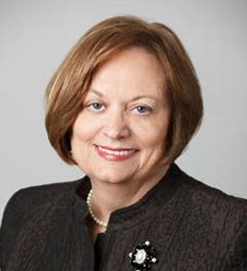
The Kansas teacher shortage reflects a national trend. When classes started this fall Kansas was 612 teachers short, up 19 percent from last year. Some positions still remain open. Furthermore, the cost of recruiting high-quality teachers has risen and become controversial.
A recent furor involves the cost and effectiveness of a Kansas contract with the not-for-profit teacher recruiting and training organization, Teach for America.
The heart of the debate is not the final 2018 payment to TFA which, as of this writing, is unannounced or the efficiency of last year’s TFA recruiters, who after agreeing to 12, placed only three teachers in Kansas.
The underlying dispute is about the merits of TFA. It’s an organization not well known among Kansans but often criticized by some Kansas educators.
TFA was born as a 1989 undergraduate thesis written by Princeton student, Wendy Kopp. Her idea led to creation of a homeland Peace Corps where recent graduates, regardless of college major, would commit to teaching for two years in inner-city and rural schools throughout the United States.
Today TFA has taught more than 50 million students. This year in the Kansas City area there are 120 TFA teachers with 13 of those in Kansas City, Kansas, but none elsewhere in Kansas.
The teachers receive the going rate for new teachers by the school district where they are hired.
TFA members undergo five weeks of pre-teaching training and participate in mentoring and professional development after that. In Kansas, TFA teachers must meet a state requirement of being enrolled in a master’s degree program.
With goals of promoting equity, offering students effective instruction and mobilizing young teachers to become future leaders, what’s not to like? Critics voice two major complaints:
• TFA teachers are inexperienced and most are not prepared by colleges of education.
• The two-year teaching model, rather than a transforming students’ learning is a résumé-boosting experience that results in disruptive teacher turnover.
In recent years, TFA has worked hard to address those issues. Moreover, teacher shortages and dramatic increases in high-need student populations have altered perceptions about what is adequate teacher preparation.
Consequently state requirements for teacher preparation and university teacher education curricula have become similar to or are fewer than TFA requirements.
Individuals with bachelor’s degrees may become Kansas classroom teachers with a summer preparatory course; then they complete licensure coursework or a master’s degree through online and campus options.
At least one Kansas university offers a program where para-professionals (classroom teacher-aides) work toward an elementary education bachelor’s degree through online coursework and mentorship and can become classroom teachers after about one year of coursework.
Reports differ but TFA data show at the end of five years, retention rates similar to that of all teachers in high-need schools and about 70 percent of TFA completers continue in an education-related career—school administration, elected public office, educational media, etc.
The recent TFA recruitment contract was meant to address the teacher shortage. Good intentions turned out to be an administrative issue for state government and a TFA problem of achieving contract objectives.
During almost 30 years, TFA has made substantial contributions in high-need schools. It’s time to move on, from current contract issues and concerns of the past about TFA’s value, to consider the benefits a restructured teacher-placement division of TFA could bring to Kansas.
Sharon Hartin Iorio is a professor and Dean Emerita of Wichita State University College of Education.

